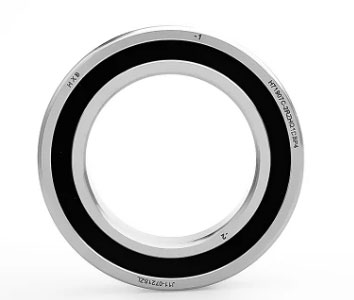Home / News / The Role and Advantages of High-Speed Spindle Bearings in Modern Machinery
The Role and Advantages of High-Speed Spindle Bearings in Modern Machinery
Introduction
High-speed spindle bearings play a critical role in the performance of various high-precision machines, including CNC machines, milling machines, and lathes. These bearings are specifically designed to support and stabilize the spindle during high-speed rotations, ensuring minimal friction, heat generation, and vibration. This article will explore the benefits and applications of high-speed spindle bearings, as well as the factors to consider when selecting the right bearing for your machinery.

High-Speed Spindle Bearings: Features and Benefits
Reduced Friction and Heat Generation
High-speed spindle bearings are designed with optimal geometries and materials to minimize friction and heat generation during operation. This helps to maintain the temperature of the spindle within acceptable limits, preventing thermal expansion and ensuring dimensional stability of the workpiece.
Enhanced Rigidity and Load-Carrying Capacity
These bearings are manufactured with high-quality materials and precision engineering, resulting in increased rigidity and load-carrying capacity. This allows them to withstand the demands of high-speed machining processes while maintaining accuracy and precision.
Improved Vibration Damping
High-speed spindle bearings feature advanced designs and materials that provide excellent vibration damping capabilities. This reduces noise and vibration during operation, enhancing the overall performance of the machine.
Extended Service Life
Due to their robust construction and high-quality materials, high-speed spindle bearings offer extended service life compared to conventional bearings. This reduces maintenance costs and downtime associated with bearing replacement, improving the overall efficiency of the machinery.
Selecting the Right High-Speed Spindle Bearing
When selecting a high-speed spindle bearing for your machine, consider the following factors:
Bearing Type
There are various types of high-speed spindle bearings, including angular contact ball bearings, cylindrical roller bearings, and hybrid bearings (combining ceramic and steel elements). Each type has its advantages and specific applications, so consult the manufacturer's guidelines and your machinery's requirements to choose the appropriate bearing.
Load and Speed Requirements
Consider the radial and axial loads that the bearing will be subjected to during operation. Additionally, ensure that the chosen bearing can accommodate the maximum rotational speed of your spindle to prevent premature failure.
Lubrication
High-speed spindle bearings require proper lubrication to function efficiently. Determine the most suitable lubrication method (grease or oil) for your application and follow the manufacturer's recommendations for lubricant type and maintenance schedules.
Installation and Mounting
Proper installation and mounting are crucial to the performance and service life of high-speed spindle bearings. Ensure that the bearings are installed and preloaded correctly, following the manufacturer's guidelines to prevent damage or misalignment.
Conclusion
High-speed spindle bearings are essential components in modern, high-performance machinery, offering numerous benefits such as reduced friction, enhanced rigidity, and extended service life. By carefully selecting the appropriate bearing type and considering factors such as load and speed requirements, lubrication, and installation, you can optimize your machinery's performance and maintain its accuracy and precision. Always consult the manufacturer's guidelines and consider seeking professional assistance if you are unsure about any aspect of the bearing selection or installation process.
- Previous: A Comprehensive Guide to Spindle Bearing Replacement
- Next: Ceramic Spindle Bearings: Advantages and Applications in Advanced Machinery













